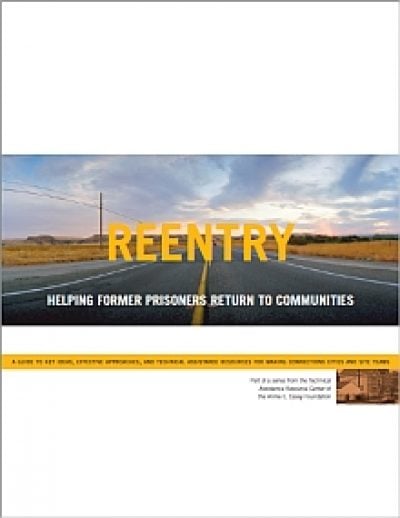

This prisoner reentry report offers technical assistance strategies and resources to reconnect men and women returning home from prison to their families and communities through employment, education, health and social services. The prisoner reentry report gives guidance on how to reduce barriers facing the formerly incarcerated, including access to housing, work, health care, counseling and job training. Policy changes that could help are highlighted. In addition, the report reviews reentry resources and supports available for families and children of the incarcerated to help address loss of income, emotional pain, disruptions in family life and social stigma.
Prisoners participating in educational programs were significantly less likely to be rearrested, reconvicted and re-incarcerated.
Investment of $1 in educational programs yielded a $2 savings in reduced prison costs.
At least two million kids in the United States had a parent in prison or jail in 2000.
Black Americans made up 12% of the general U.S. population and 46% of the nation’s prison population.
A black male’s chance of going to prison in his lifetime was greater than 1 in 4 in 2000, while a white male's changes were 1 in 23.
Children with locked-up parents are at risk of hunger, homelessness, and impaired cognitive and social-emotional development.
Communities that want to help families affected by incarceration may have trouble identifying and reaching them. There is no single agency or system responsible for serving them, and the stigma and trauma of incarceration, combined with the extra financial pressure many families experience, may discourage families from availing themselves of services.
There is significant evidence to suggest that many employers conduct criminal background checks and exclude individuals from employment based on their criminal records — regardless of whether there is a legal basis for this discrimination.
High rates of incarceration in the United States have a high cost, both to taxpayers and to families and communities. More cost-effective approaches are available for non-violent offenders. Community-based solutions to housing, education, employment and health care barriers help reduce recidivism and reconnect returning prisoners to their families and neighborhoods.
Subscribe to our newsletter to get our data, reports and news in your inbox.
Subscribe to our newsletters to get our data, reports and news in your inbox.
© 2024 The Annie E. Casey Foundation. All Rights Reserved.